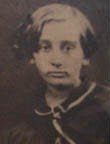 What if you were not allowed to celebrate christmas?
What if you were not allowed to celebrate christmas?That's what it was like for the people who lived during the time of our feature film, Under Jakob's Ladder. Yes, this movie is based on a true story... one that is set in the Soviet Union in the 1930s.
Marta (played by Chloe Roe in the movie) is the only person portrayed in the movie (as far as we know, at least) who is still alive today. Her remembrances were one of the biggest influences on our research when we were writing the screenplay.
Using the memories of the real Marta, early drafts of the script actually had a Christmas scene. While ultimately this Christmas scene was cut from the script, we thought you might be interested in what it was like to "celebrate" Christmas in the old Soviet Union... at a time when christmas was officially banned by the authorities.
Some of her memories stem from a time before some of the harshest Soviet crackdowns (i.e. before the holodomor famine in 1932-33).
Q: Tell about what christmas was like when you were a child in the Soviet Union.
A: That Christmas I will never forget. My grandfather (Jakob, played by Jeff Stewart in the movie), I still know where he was sitting and my mom. My mom and my grandfather put the tree up. We were not allowed to go in [to see the tree], before it was ready.
Q: When was this?
A: I think, 1931. We lived with my grandparents. To share the heat.
Q: How old were you?
A: Four years.
 Of course, later on, a Christmas tree would be out of the question. Under Stalin, the people had to be careful of not only the secret police, but also their neighbors... and even relatives. However, since one of the biggest holidays sanctioned by the communist government was New Year's, if they were careful, the people could use that time as an excuse to celebrate christmas. (Unofficially, of course.)
Of course, later on, a Christmas tree would be out of the question. Under Stalin, the people had to be careful of not only the secret police, but also their neighbors... and even relatives. However, since one of the biggest holidays sanctioned by the communist government was New Year's, if they were careful, the people could use that time as an excuse to celebrate christmas. (Unofficially, of course.)It would have been during these years that Marta remembers her grandfather, Jakob, taking a tree branch (no leaves) and wrapping it in newspaper, papier-mache-style; then hanging the Christmas ornaments on the white branches. (Ornaments that were carefully hidden in a secret spot during the year.)
Q: What was Christmas like after 1933?
A: There were no presents. We got some money. Not very much. Maybe a ruble. It was not worth very much. But we children were happy. We each set out a plate and got apples and candy. Really good candy. It was made of cream and sugar. You could make it or you could buy it, too. But it was even better if you could buy it.
Q: Anything else that you remember?
A: We did baking. [Cookies shaped like] stars and animals. We saved up to do baking: the flour and eggs. And my grandfather and my mom, they would sing a song. A wonderful song. And my grandfather with a real bass voice. I still can hear that.
Q: Was it dangerous to celebrate at this time?
A: Sure, it was dangerous. We had to be careful. It was not like today. We waited until dark, the later the better. We children were not supposed to talk about it or let anyone know what we did in the house. Not everyone did what we did. But my grandfather and father thought it was more important to celebrate. Important to our faith.
No comments:
Post a Comment